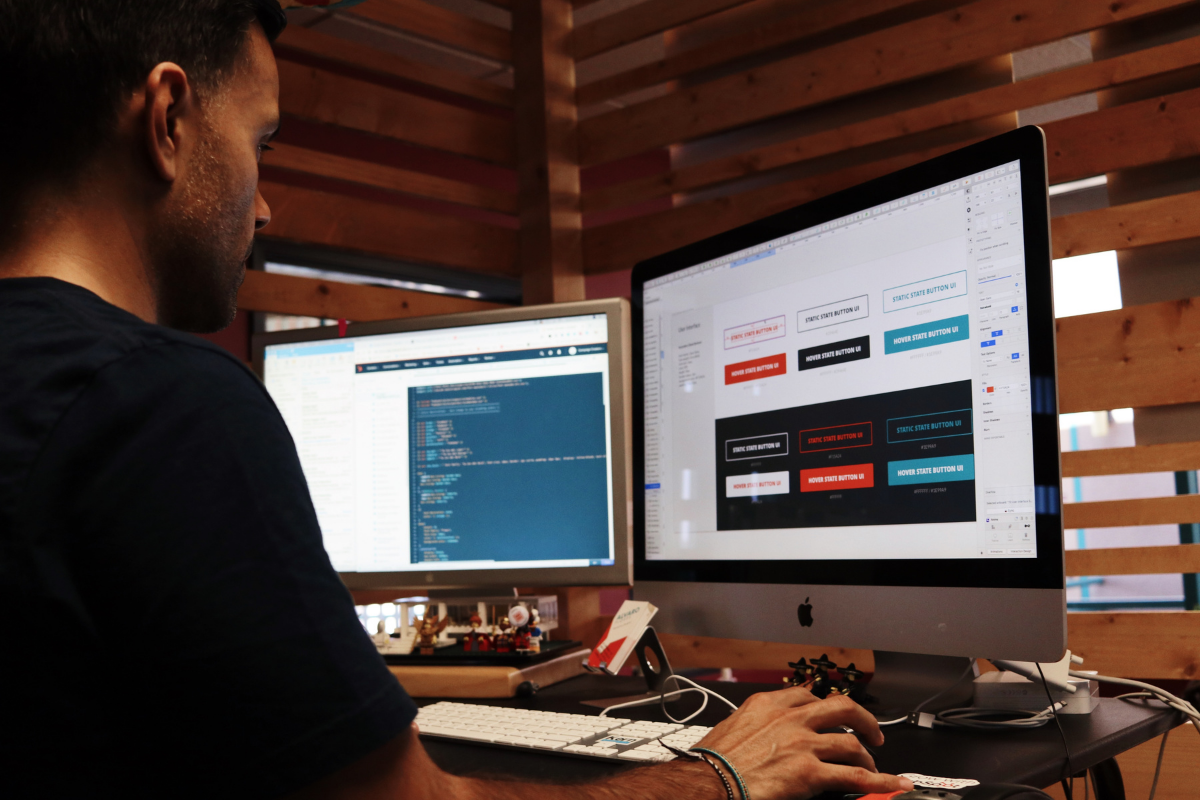Comparing Adobe Magento Open Source vs Magento Commerce
Want more traffic and online revenue? Comparing Adobe Magento Open Source vs. Magento Commerce. Which platform is right for your eCommerce store?

Now more than ever, an eCommerce website is a critical component of business success. But here’s the tricky part - your business changes, digital technologies change, new online threats emerge, regulations change, and customer behavior changes.
You can’t future-proof your website design and development, but by selecting the right eCommerce platform for your needs and working with an experienced partner, reduces the risk of unanticipated technical issues and excessive development costs. As with other business-critical technologies, it is essential to balance your eCommerce vision with the practical realities of the total cost of ownership (TCO).
The Magento eCommerce platform from Adobe is one of the most trusted names in online commerce. This highly customizable and robust platform offers a great deal of flexibility for B2B, B2C, and hybrid companies alike. Making the most of this flexibility demands a view of not only your eCommerce vision but also the investment required for design, development, and ongoing maintenance. So, let’s take a deeper dive into the total cost of ownership for a Magento eCommerce website, and how you can realize a TCO that drives your online business forward rather than slowing it down with higher and higher costs.
In the world of eCommerce, Total Cost of Ownership or TCO is a calculation of the total cost of implementing and maintaining an eCommerce solution over its useful life cycle. Exact calculations vary from business to business, but in general, these costs are made up of designing, developing, deploying, and maintaining your chosen solution.
Today, Adobe offers three versions of Magento, each with different TCO impacts:
No matter which flavor of Magento you choose, the biggest variable in total cost will be the degree of customization.
There are three primary scenarios for hosting when it comes to Magento:
1. On-premises, self-hosted, self-managed
2. Off-premises, 3rd party hosting, unmanaged
3. Off-premises, 3rd party hosting, managed
In some cases, options 2 and 3 yield about the same impact on your total cost of ownership. However, more often than not, managed hosting has a lower TCO due to greater efficiency in issue detection and resolution.
The Magento developer community builds and sells themes and extensions that can be added to a Magento implementation. Magento themes and extensions are not created equally. Due to the interrelated nature of the platform, selecting a well-designed theme and well-coded extensions is essential in ensuring the long-term value of your website.
In the short term, using Magento development best practices increases the chance for a smooth implementation with the core Magento code. In the long term, well-coded extensions will be more compatible with future site upgrades and patches.
Custom Magento development done well can yield fantastic results for your online business. Custom development is what sets the Magento platform apart from many other SaaS platforms on the market. Thoughtful customizations can give your business a competitive edge in attracting, engaging, and satisfying your online customers.
Successful custom Magento development depends on
As a general rule, a highly customized Magento implementation will yield a higher Total Cost of Ownership than an implementation without substantial change to the base Magento platform.
If customizations are important for your online business, it is worth investing in quality Magento development. While initial development costs may seem high, these costs pale in comparison to the high and often unexpected costs of poorly coded work.
Technology moves quickly these days. A well-managed Magento eCommerce implementation is like a living, breathing thing requiring care and feeding. This care and feeding includes Magento upgrades, security patches, bug fixes, and ongoing functional development to maintain online competitiveness. These ongoing costs may be spread out over time, but remain an important consideration in calculating your Total Cost of Ownership.
Every company has its own tolerance for risk online. Missing out on the very latest Magento update or security patch will not likely make or break your online business. However, if the version of your Magento website is no longer actively supported by Adobe, your risk profile goes up dramatically.
In our experience, the further a website is from the latest updates and patches, the higher the costs associated with an eventual upgrade. The risks of malware, a malicious hack, or losing compliance with online business regulations similarly increase. The closer you are to the latest supported version, the lower these risks and the greater efficiency you’ll have in implementing the next update.
Predictability and cash flow are important considerations in Total Cost of Ownership calculations. Well-designed support programs take a proactive approach to address potential issues and have a defined payment schedule for ongoing support and maintenance. Limited or no support limits your up-front costs but increases the risk of surprise, both in impacts to your online business and in emergency costs for repairs.
With an expanse of Magento customization options, the world of agencies, designers, and developers vying to help you are similarly vast.
An important tool in controlling your total cost of ownership is partnering with a skilled and experienced team using Magento's best practices in their design and development efforts.
It can sometimes seem like a low-cost freelancer is the best way to minimize TCO. In our experience, the opposite is true. The term “Magento rescue” describes a company that chose an inexpensive development path, which over time became cumbersome to develop on or even patch and update using Adobe’s own code.
The ultimate realization that their website was built with cobbled-together code put them in desperate need of a rescue. In many such cases, the solution is a complete site rebuild and a dramatic increase in the total cost of ownership for their online business.
The world of Magento customizations can seem endless. As you consider your options for your new website, it’s easy to feel drawn to the shiny, new, and trendy functionalities or design features. You could easily end up with a gorgeous and sophisticated website (the Ferrari) and it would land you in the higher end of TCO. Alternatively, you could build a functional and simply designed site (the Ford), meeting your core business needs and keeping you on the lower end of TCO.
In some cases, the Ferrari is just what you need; in others, the Ford is a perfect fit. With more than 10 years of experience designing, developing, and supporting Magento eCommerce solutions, IronPlane Solutions Specialists have gained numerous insights into optimizing the Magento platform for achieving eCommerce business goals and TCO targets.
Whether you are a current Magento user or are considering your next eCommerce platform, we invite you to learn more about our Magento Development Services and contact us to learn more insights to help you achieve your desired total cost of ownership.

Want more traffic and online revenue? Comparing Adobe Magento Open Source vs. Magento Commerce. Which platform is right for your eCommerce store?

Is your website optimized for the New Year? Learn innovative Magento optimization strategies to increase speed, conversions, usability, and online revenue.

Learn why customizing your Magento site is essential, what aspects of your site can be customized, and the benefits associated with Magento customization.